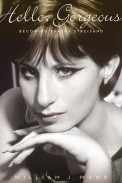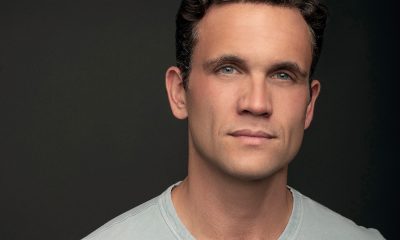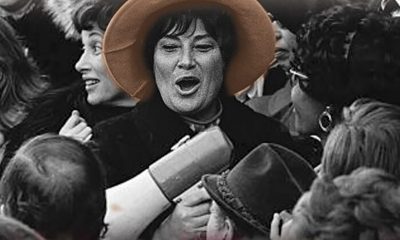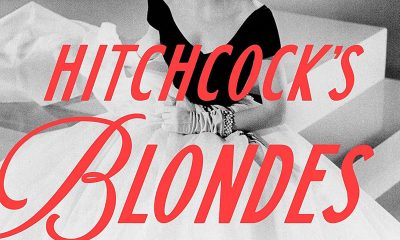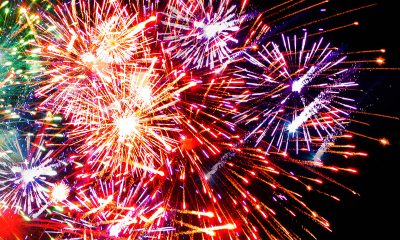Arts & Entertainment
‘Hello Gorgeous’
Gay biographer deconstructs Streisand’s ascent to superstardom
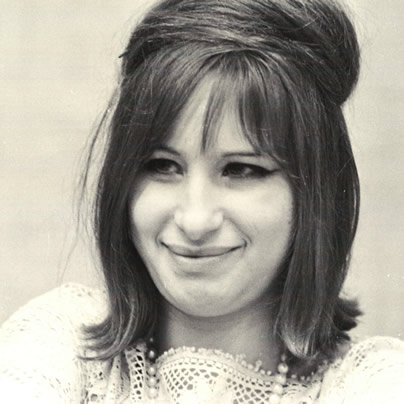
Jewish Literary Festival: William Mann
Closing Night
Wednesday, 7:30 p.m.
D.C. Jewish Community Center
1529 16th Street, NW
Tickets: $10
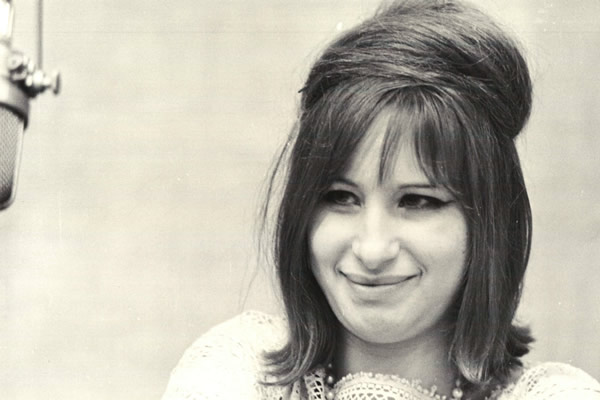
Barbra Streisand in the recording studio for Columbia in New York, mid-1960s. (Photo from the Collection of Stuart Lippner, courtesy Houghton Mifflin Harcourt)
It’s an interesting time for Barbra Streisand fans.
She’s on tour and played New York last weekend (no D.C. dates scheduled).
A (sort of) new album dropped Oct. 9 called “Release Me” that collects 11 previously unreleased outtakes from various album projects going back to the beginning of her career in the early ‘60s. The faithful legion, of course, are beside themselves finally getting to hear rare cuts like her interpretations of Jimmy Webb’s “Didn’t We” and “Home” from “The Wiz.” Her MusiCares tribute concert, in which she was serenaded last year by Diana Krall, Barry Mainlow, Seal, Stevie Wonder and others, is out on DVD and Blu-ray from Shout! Factory Nov. 13.
But just as interesting is the new book “Hello, Gorgeous: Becoming Barbra Streisand,” also released this month from gay author William J. Mann, who, in addition to several novels, has penned well-received bios on William Haines, John Schlesinger, Katharine Hepburn and Elizabeth Taylor. Mann, an iconoclast who doesn’t smash his subjects but delights in deconstructing widely parsed anecdotes of show biz folklore, zeroes in on Streisand’s early years from early 1960 (when she was 17) to the spring of ’64 by which time she had opened in the long-delayed “Funny Girl” on Broadway and recorded three platinum-selling albums for Columbia.
Mann focuses on her early years because he says “everything we think we know about her can be traced back to this seminal period … She arrived in New York in 1959 as a penniless teenager without any connections or experience. Less than five years later she was the top-selling female recording artist in the country and the star of one of Broadway’s biggest smash hits. Going in as close as I have in this book has allowed me to really shed light on how she accomplished such a feat.”
Mann’s in Washington Wednesday on his book tour at the D.C. Jewish Community Center for a 7 p.m. Streisand presentation after which he’ll sign copies of the book. During two phone chats this week, the 49-year-old author talked about the process of bringing the book — he wasn’t particularly a Streisand fan before — to fruition and how writing it compared to his mammoth Hepburn and Taylor tomes.
Mann says focusing on Streisand’s early years turned out to be an unexpected advantage. Because few of the key players are still in touch with the notoriously private and exacting legend, they felt freer, Mann says, to cooperate. He wasn’t on a mission to bash Streisand, but he did want an honest and fresh take.
“These very, very famous people really live in a bubble,” he says. “It becomes virtually impossible to get an unvarnished opinion because any colleague you talk to is going to have nothing but superlatives and that becomes very difficult. … About 90 percent of the people I spoke to didn’t continue on with her. … so they could be candid. They didn’t have to think, ‘Gee, is Barbra gonna be pissed at me, I have to work with her next month.’”
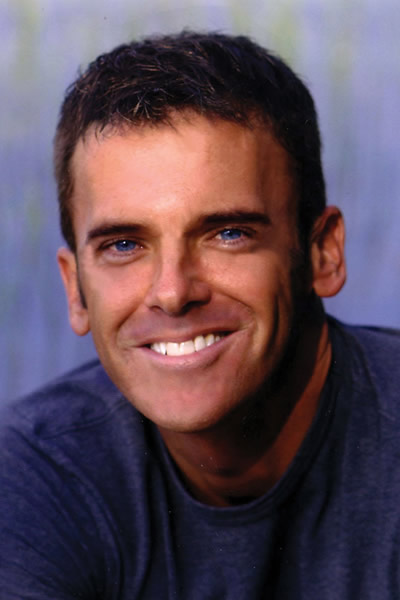
Gay historian and author William J. Mann (Photo by Michael Childers; courtesy Houghton Mifflin Harcourt)
Despite calling the book “notable for its breadth of detail and fair mindedness,” biographer James Gavin writing for the New York Times said “little” of the book is new, a point Mann counters with his biggest coup — being granted the right to delve into the Jerome Robbins (the Broadway legend who worked on “Funny Girl”) papers at the New York Public Library, which had not previously been plumbed for any Streisand book and are not available to researchers (Mann got an exception through the Robbins’ estate).
And even though Streisand’s first boyfriend, Barry Dennen has written an entire book (1997’s “My Life with Barbra”) on their relationship, Mann says he got fresh material from the gay actor for “Gorgeous.”
One of Mann’s favorite experiences was visiting Phyllis Diller, who became a pal and mentor of the young Streisand during their time performing at seedy New York nightclub the Bon Soir in the early ‘60s. (Diller died in August.)
“She was such a hoot,” Mann says with a laugh. “That interview was probably the most enjoyable of the process. I got to go to her house and she was flirting and laughing. I asked her if she’d give me one of her trademark laughs and she did. I just sat there thinking, ‘I love my job.’”
Other “gets” weren’t so splashy but proved equally invaluable. Though scads of Streisand material has been released and is on YouTube, Mann says the Streisand aficionados — almost all gay — were helpful. He thinks his track record on the Hepburn and Taylor books helped open doors on several fronts.
“There’s one fan, and of course he’s made me promise never to reveal who he is, who had some really amazing stuff. There was a DVD (Streisand) was planning to put out maybe five-six years ago of all her old TV appearances but for whatever reason, it never came out. This guy had a bootleg copy of it, which was extraordinarily helpful. Another fan had some of her original contracts. Which is crazy. Who knows how they get this stuff. You’d think she’d have those herself, but somehow they had them and those were very helpful as well. And of course once you get in those fan circles, one things leads to another and another. I didn’t write it for the fans, because then you’d end up censoring it to please them, but they were a great help.”
Early signs are good.
According to Nielsen BookScan, the book has already sold about 2,000 copies. And a glowing USA Today review said Mann’s “meticulous research and insightful analysis go deeper than any previous (Streisand) biography.” Liz Smith called it “excellent.” Amazon reader feedback has been highly positive and perhaps the surest sign that the writer did his homework, there’s been nary a peep, at least so far, from the Streisand camp (she devotes a whole section of her official website to debunking what’s written about her — check out the juicy reads on her tangles with Larry Kramer over a never-made film adaptation of “The Normal Heart” she wanted to do).
At more than 500 pages, “Gorgeous” makes for a lengthy yet brisk read. Mann, who splits his time between New York and Provincetown (where he does most of his writing), is happy to engage a few questions the book inspires, one common enough that he’s written a Huffington Post piece on the topic: that is, surely it’s no coincidence that Streisand, who had several key gay men in her life very early on in her career, ended up one of the biggest gay entertainment icons of all time, right?
“It’s not a coincidence at all,” he says. “She was shaped by so many gay influences … in various ways. The way she dressed, the way she put a song across, the way she styled her songs, they way she interacted with an audience, it’s so obvious all her early mentors were gay and I believe that when those early audiences went to see her, they responded to something familiar. The way she laughed, the way she moved, her campy humor. There was something there gay men recognized and thought, ‘Oh, we can relate to this chick.’ And she was not the first one to have this happen either. It goes all the way back to Mae West and the drag queens she worked with in New York. You see it with Judy (Garland) with Roger Edens, with Joan Crawford and Billy Haines … with Madonna it was the same thing.”
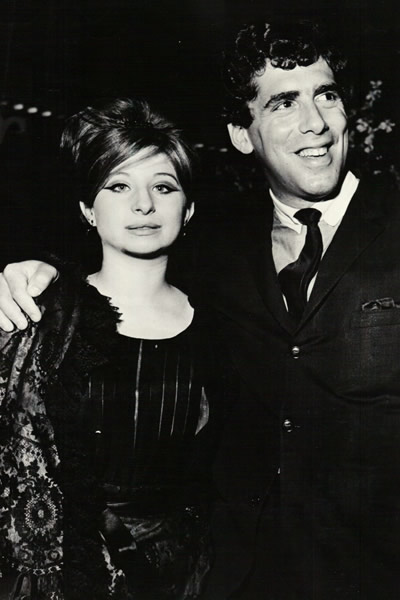
Barbra Streisand with first husband, actor Elliott Gould en route to the Tony Awards on April 29, 1962. (Photo from the collection of Stuart Lippner, courtesy Houghton Mifflin Harcourt)
And since Mann, with the Taylor and Streisand books especially, has focused on the nature of fame and how it was achieved — a dissection of the lucky breaks versus the raw material — another question occurs: given Streisand’s undeniable talent and famous drive, was her legend and success inevitable?
Mann says no.
“She would like us to think that, but no, I don’t think it was at all. I think she benefited form some really shrewed salesmanship and a degree of luck. Just the fact that there were some major parts with ‘I Can Get it For You Wholesale’ and “Funny Girl’ for unusual looking Jewish girls, she was lucky that she was there for those parts at the time they came along. Of course she’s brilliantly talented but there are lots of people who were. You hear some of these other singers from the nightclub era like Blossom Dearie or Joanna Beretta and you’re like, ‘Wow, they’re every bit as good as Barbra,’ but they lacked something — either a very shrewd publicity campaign on their behalf or perhaps their own ambition … it took a terrific amount of PR to make it happen.”
Game time: Kate, Liz or Babs?
William J. Mann has written well-received bios of three of the most famous legends the 20th century produced: Katharine Hepburn, Elizabeth Taylor and now, Barbra Streisand. At the end of an interview, Mann was game for a “lightening round” in which he considers how the three icons stack up. He had to answer each question with one of the three names.
Of the three, which had:
- the most raw talent? “Streisand”
- the most career triumphs? “Taylor”
- Was the most personally content? “Taylor”
- Whose personality evolved the most over the decades? “Hepburn”
- Which was the most fan friendly? “Taylor, by far.”
- The most private? “Streisand. Hepburn was private, but she also put things out there, although not always her true self. So I guess Streisand.”
- Whose work has best stood the test of time? “That’s kind of a draw. They all have. You look at Hepburn in a film like “Alice Adams,” which is this beautiful, brilliant, heartbreaking film that totally stands up. Or Elizabeth in ‘Virginia Woolf’ and you just think, ‘Wow, nobody could have done that better.’ Or one of Barbra’s albums.”
- Which had (or has) the most ardent fans? “Streisand”
- Was the toughest to research? “I suppose Hepburn but she had just passed away so that opened some doors. The other two were alive when I was writing.” (Taylor died shortly after the Mann book came out.)
- Had the most gays in her personal life? “Taylor”
- Had the easiest path to stardom? “Taylor. It was practically handed to her.”
- The toughest? “Streisand, even though it was really fast.”
- And just for fun, any word on how Streisand or Hepburn felt about tying for the Best Actress Oscar in ’68? “They both probably hated to share it,” he says. “Hepburn made a big show of not caring about the Oscars but of course she cared a great deal. … Streisand was very gracious when she accepted (Hepburn did not attend) and said she was ‘in great company.’ It was probably unlike either of them to send the other a congratulatory note, but I don’t fully know the answer to that or whether anybody ever tried to get them together for a photo. I suspect neither of them would have been too wild about that.”
— Joey DiGuglielmo
Photos
PHOTOS: Independence Day Weekend in Rehoboth
Wicked Green Pool Party, fireworks among festivities
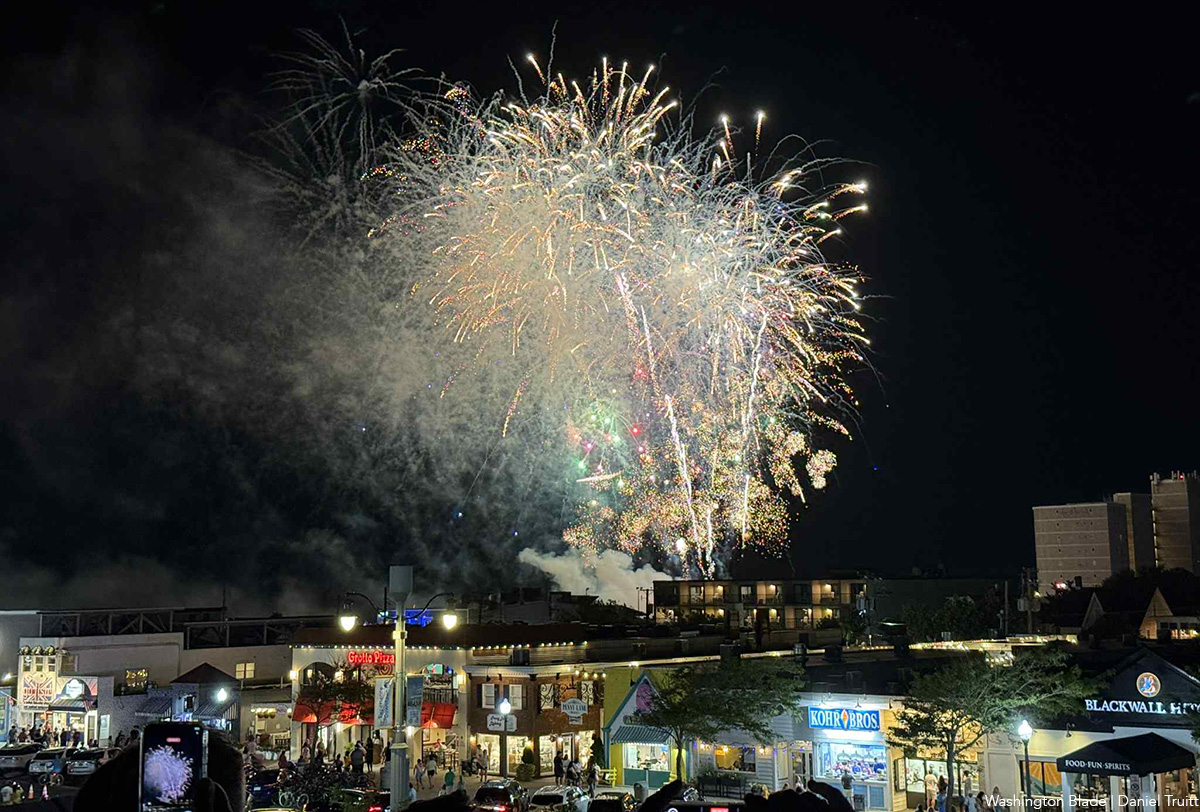
Vacationers and residents alike enjoyed Independence Day Weekend activities in Rehoboth Beach, Del. The Wicked Green Pool Party drew hundreds to the CAMP Rehoboth fundraiser on Saturday. That evening, revelers went to the rooftops to watch the fireworks display.
(Washington Blade photos by Daniel Truitt)
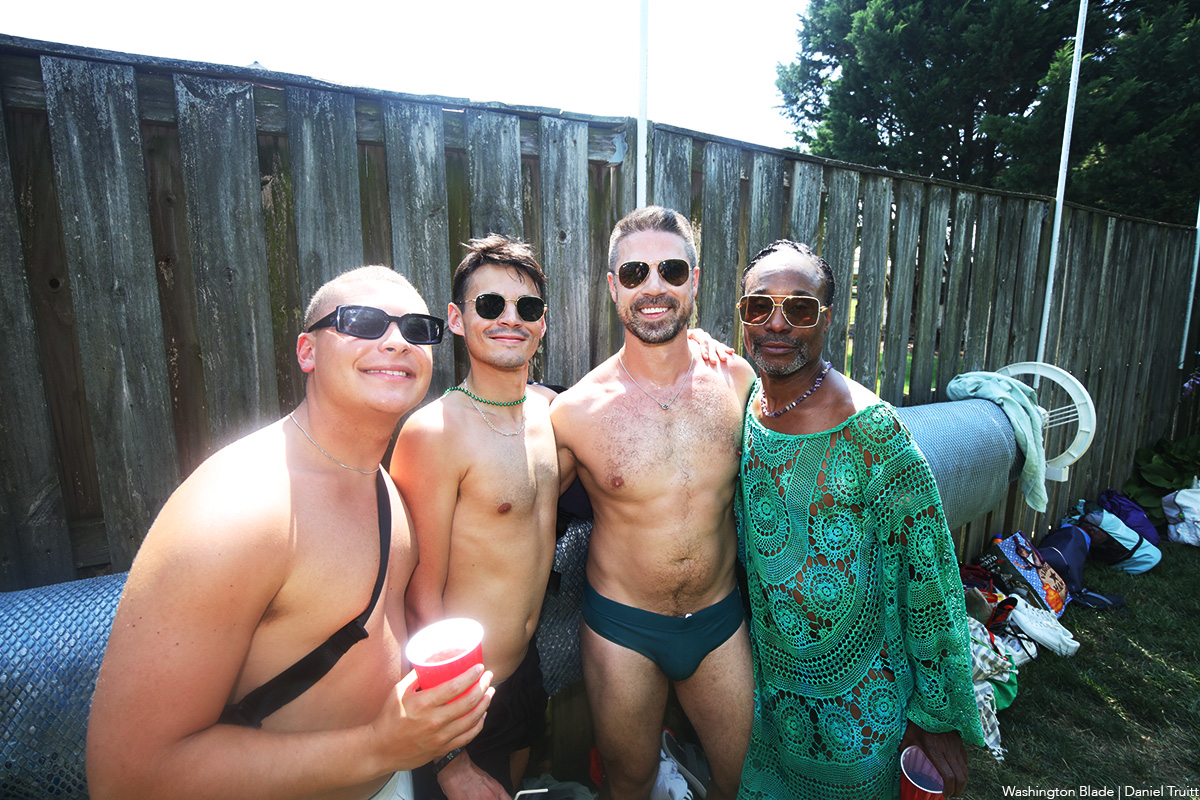
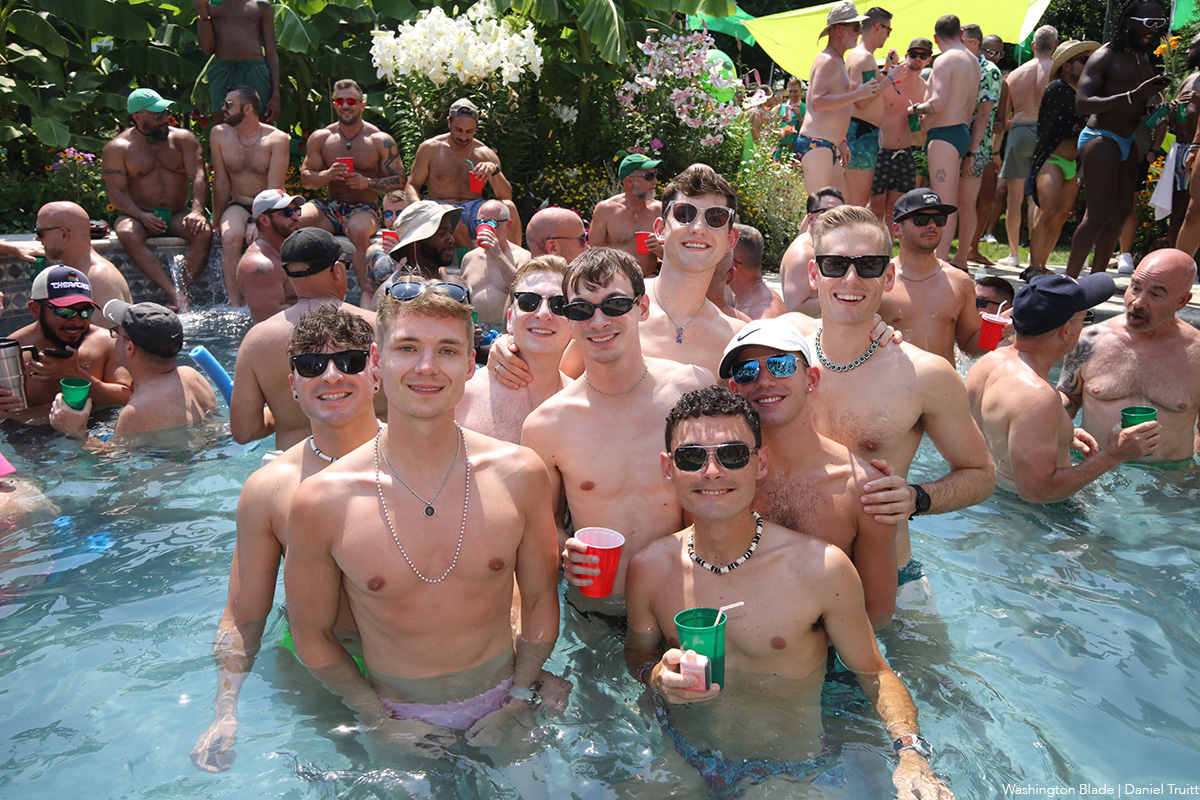

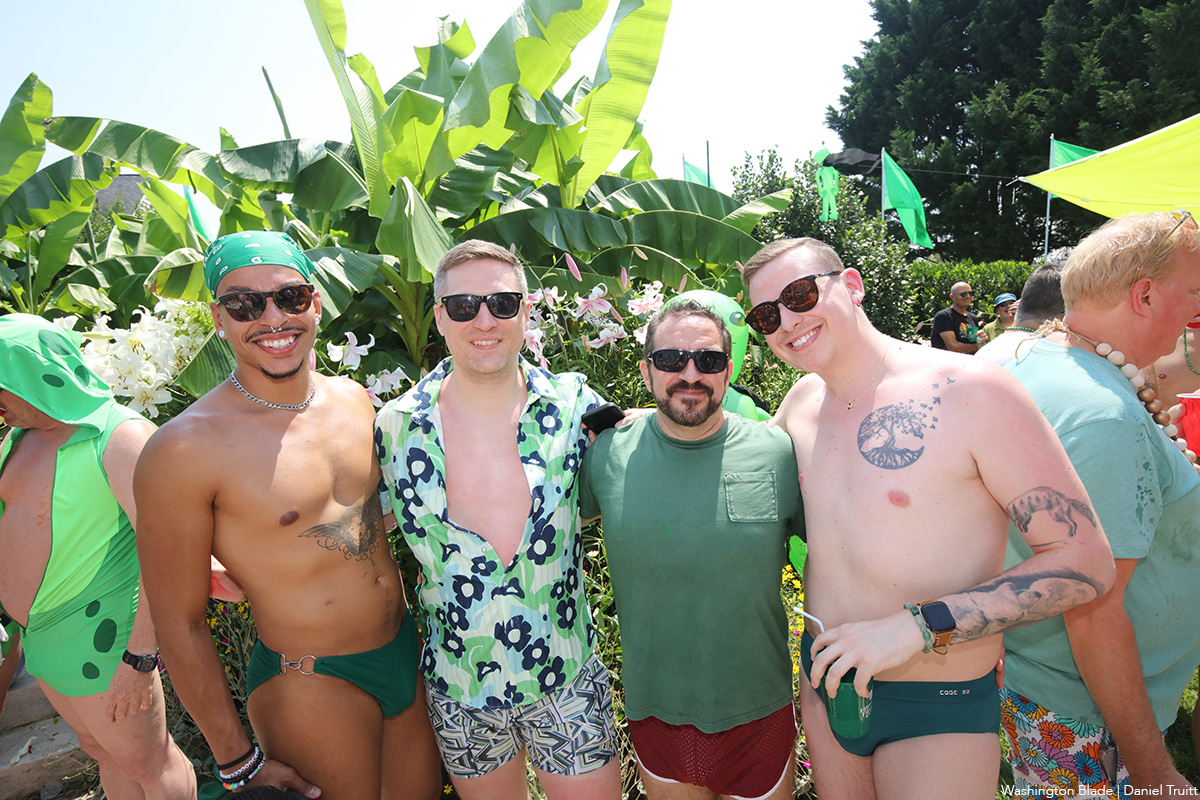
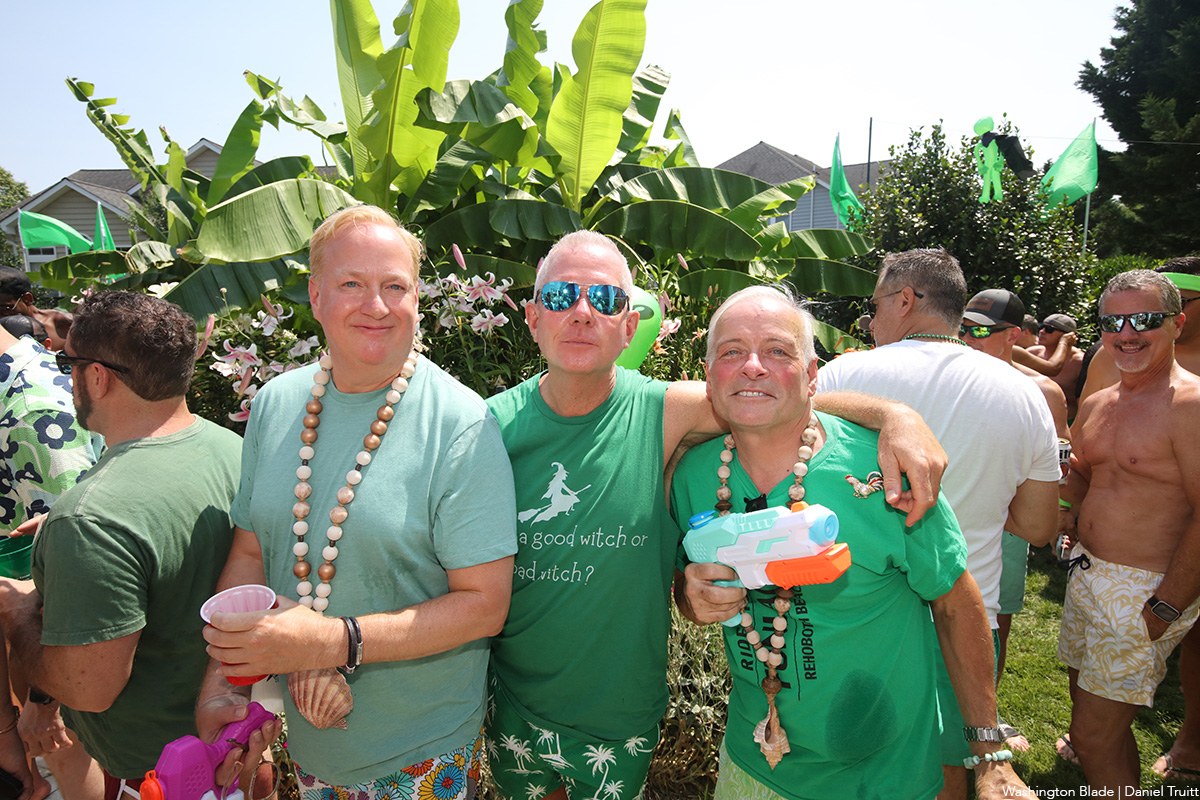
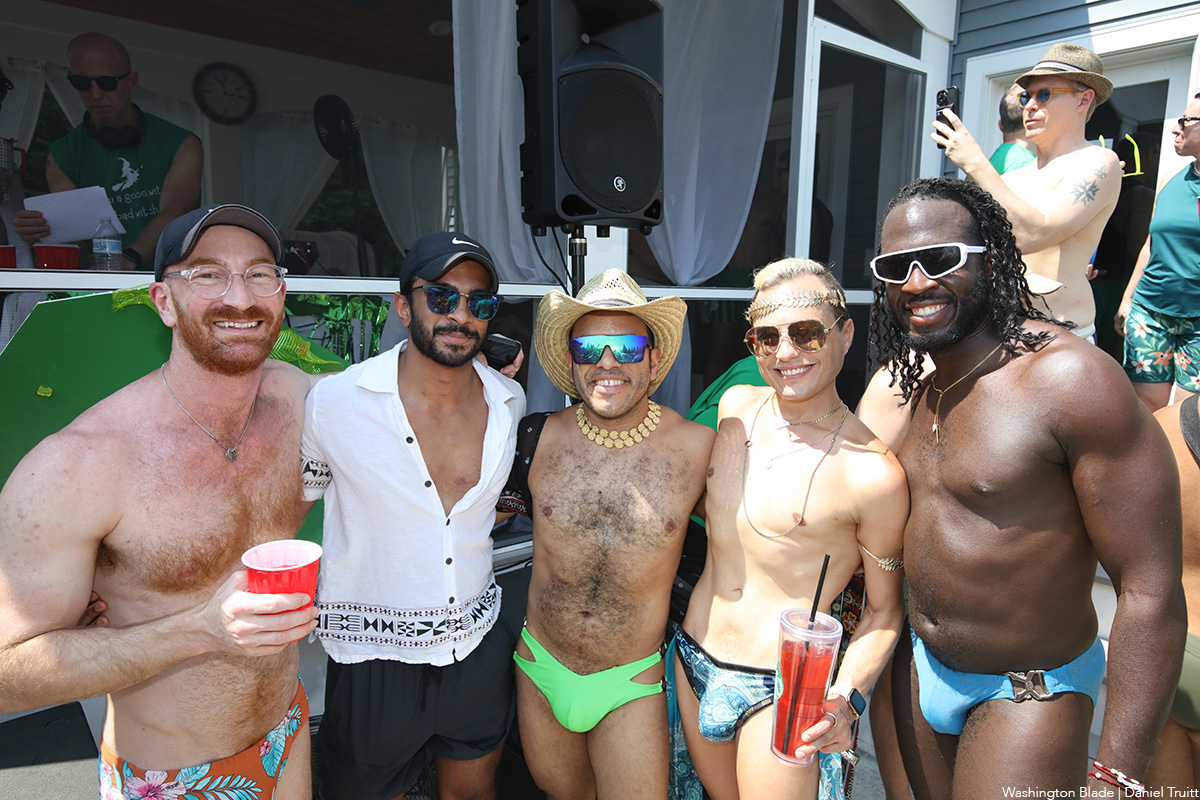
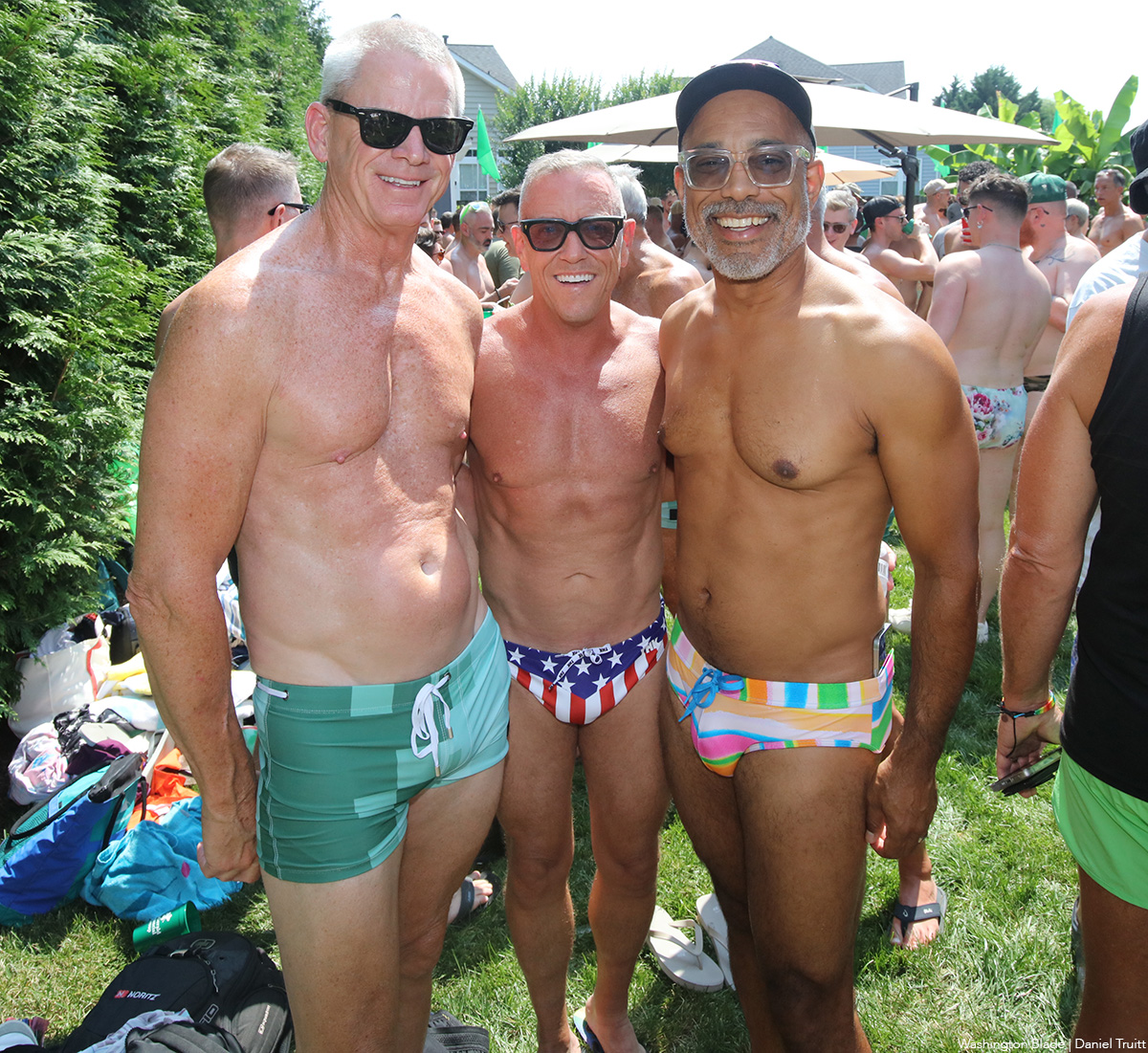
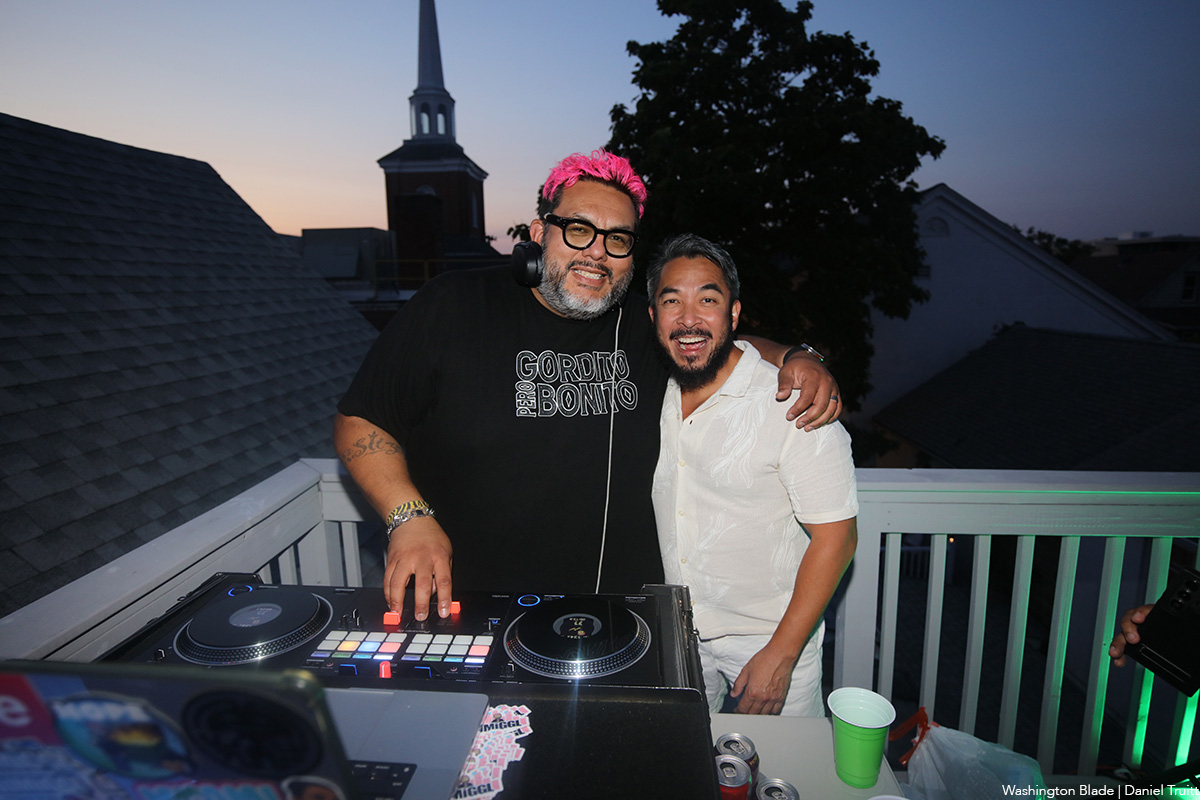
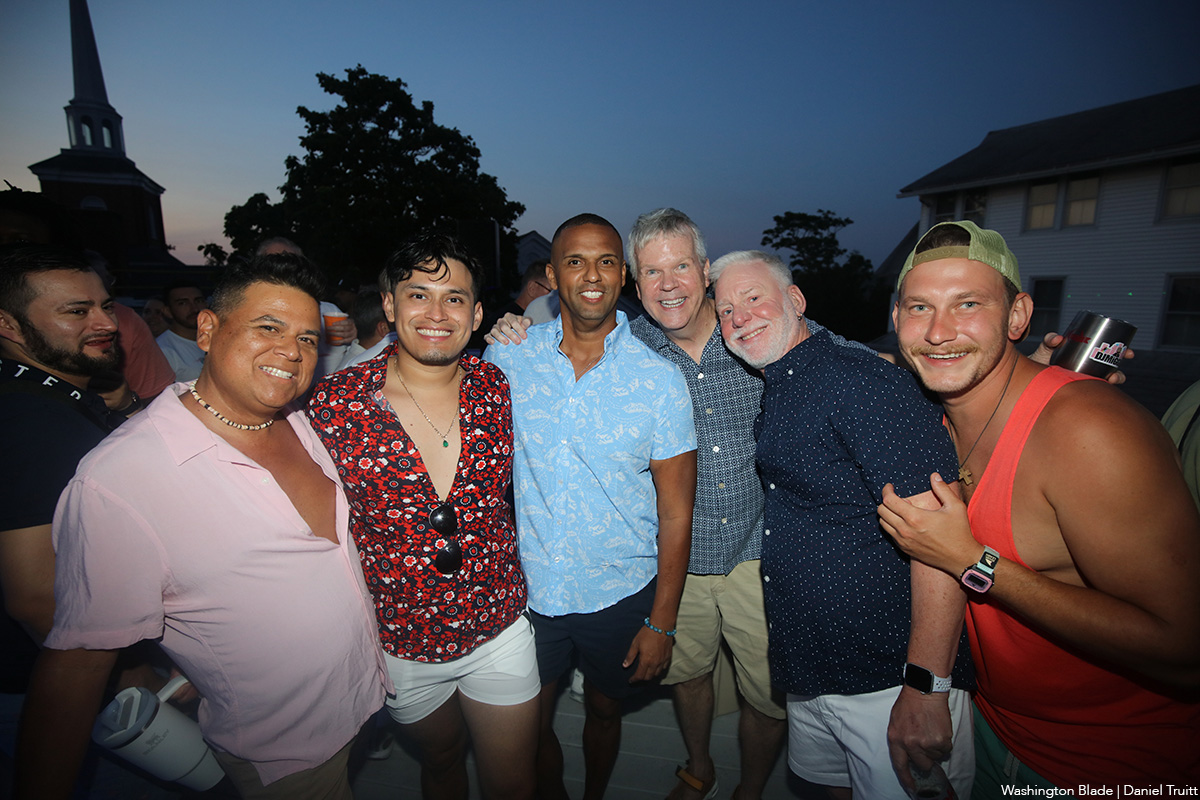
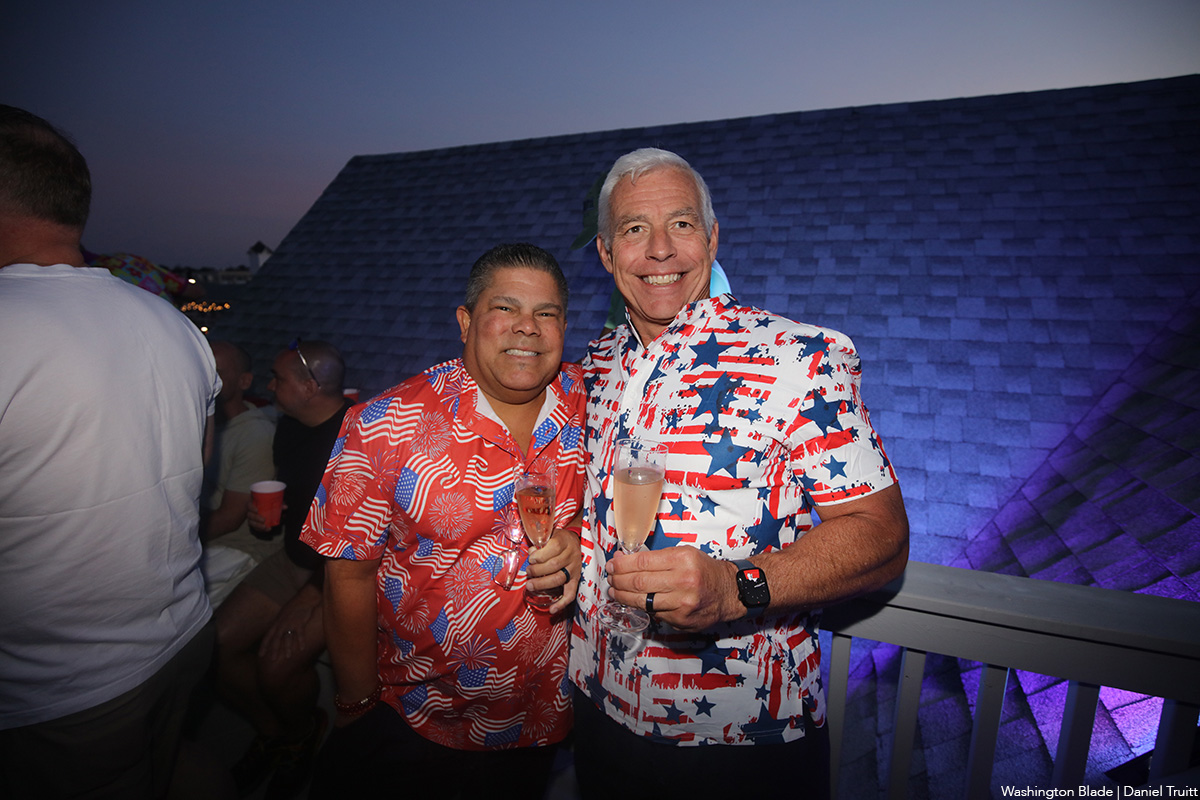
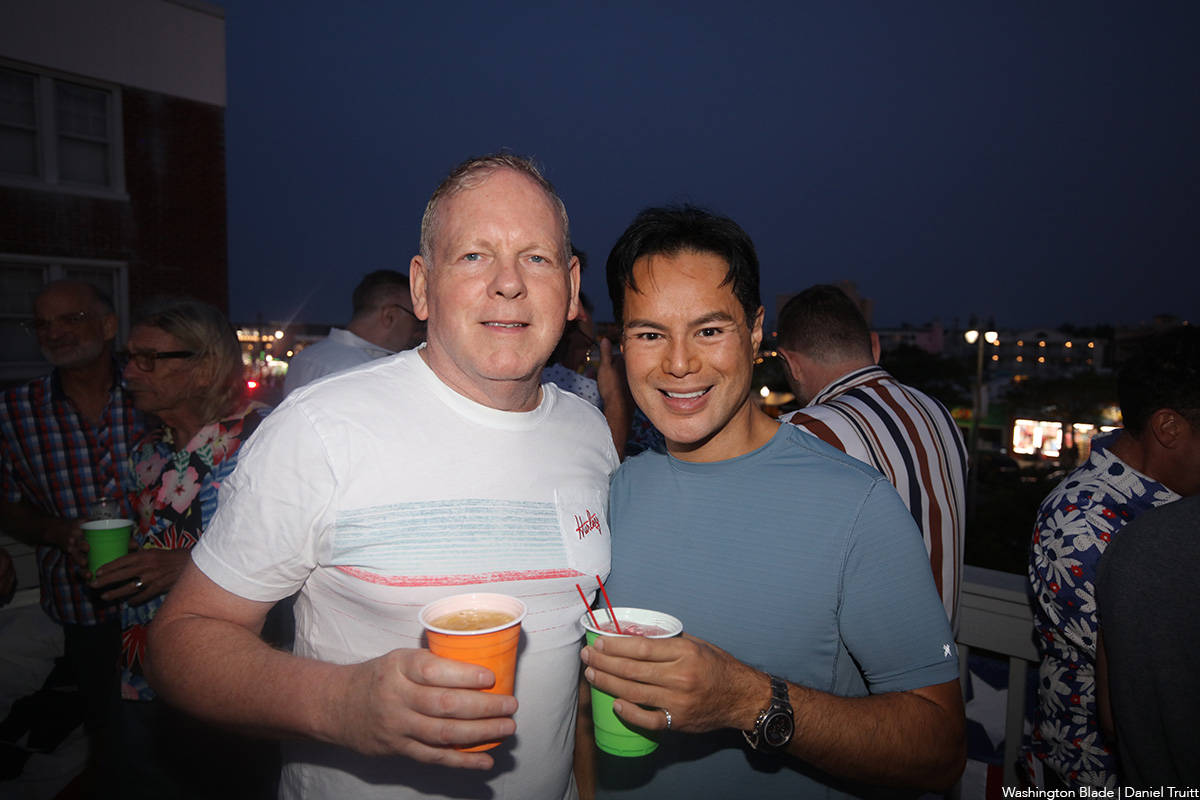
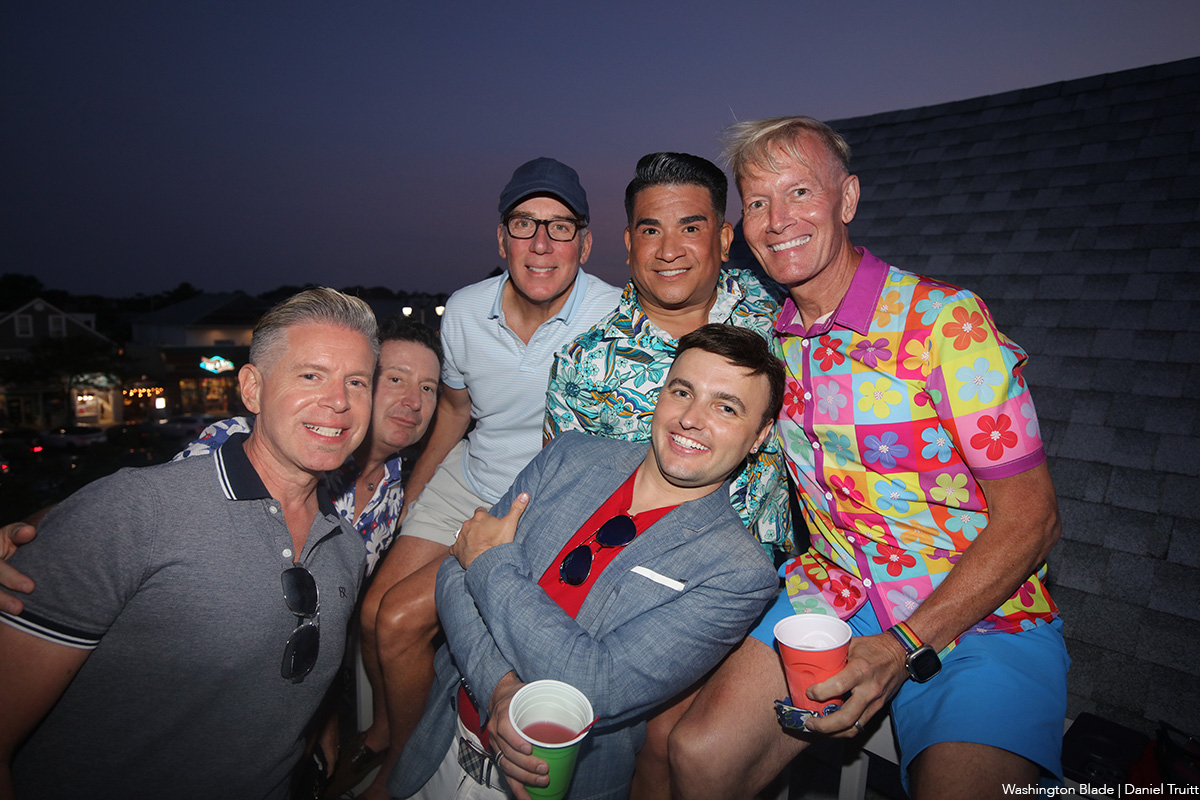
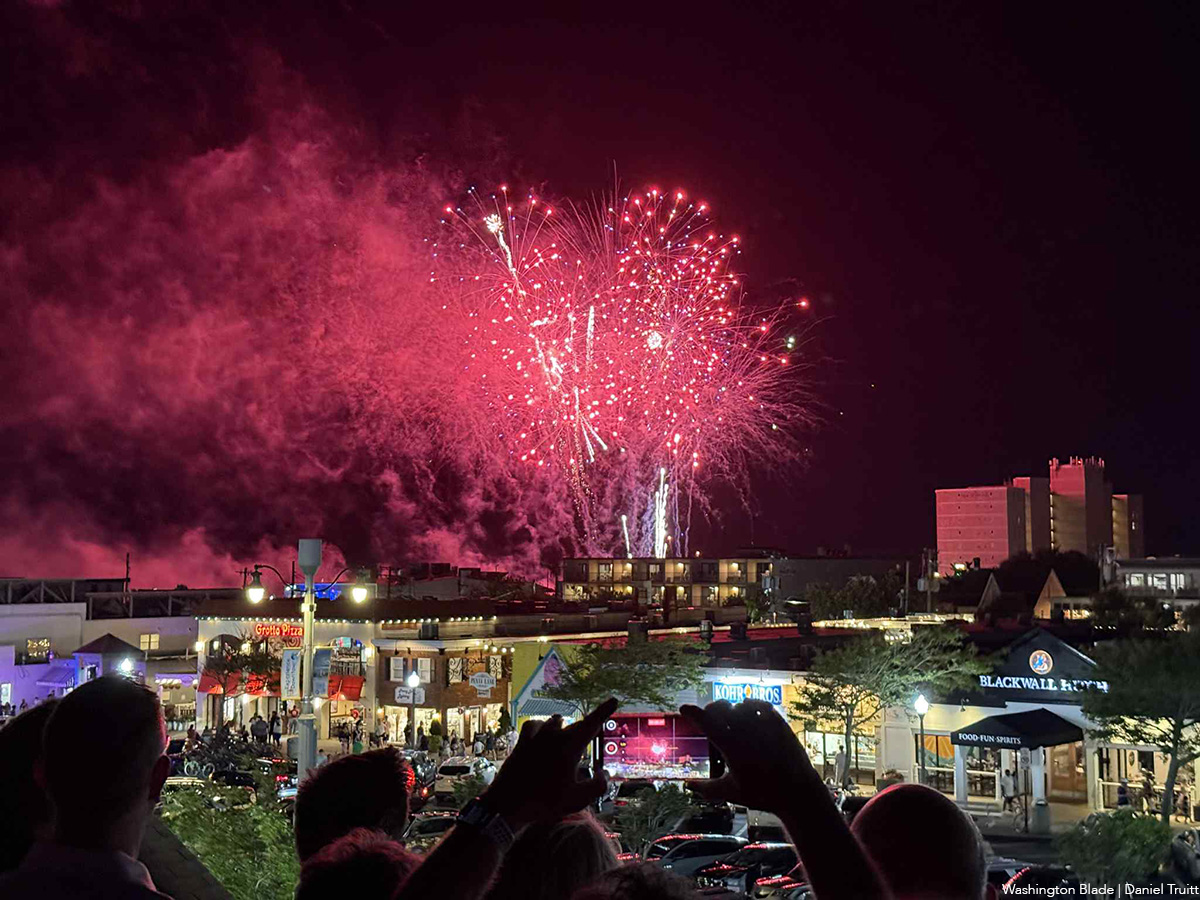
Music & Concerts
Red, White, and Beyoncé: Queen Bey takes Cowboy Carter to D.C. for the Fourth of July
The legendary music icon performed on July 4 and 7 to a nearly sold-out Northwest Stadium.
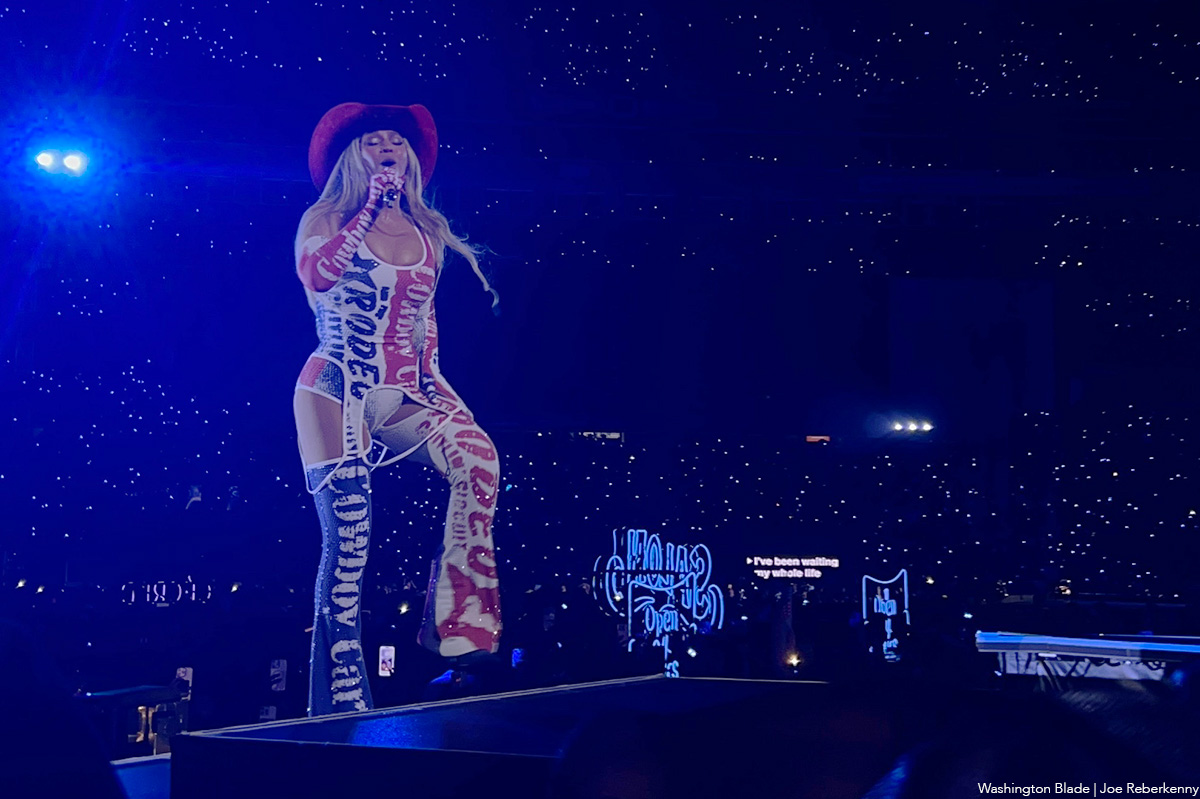
Just in time for Independence Day, Beyoncé lit up Landover’s Commanders Field (formerly FedEx Field) with fireworks and fiery patriotism, bringing her deeply moving and genre-defying “Cowboy Carter” tour to the Washington, D.C. area.
The tour, which takes the global icon across nine cities in support of her chart-topping and Grammy-winning country album “Cowboy Carter,” landed in Prince George’s County, Maryland, over the Fourth of July weekend. From the moment Beyoncé stepped on stage, it was clear this was more than just a concert — it was a reclamation.
Drawing from classic Americana, sharp political commentary, and a reimagined vision of country music, the show served as a powerful reminder of how Black Americans — especially Black women — have long been overlooked in spaces they helped create. “Cowboy Carter” released in March 2024, is the second act in Beyoncé’s genre-traversing trilogy. With it, she became the first Black woman to win a Grammy for Best Country Album and also took home the coveted Album of the Year.
The record examines the Black American experience through the lens of country music, grappling with the tension between the mythology of the American Dream and the lived realities of those historically excluded from it. That theme comes alive in the show’s opening number, “American Requiem,” where Beyoncé sings:
“Said I wouldn’t saddle up, but
If that ain’t country, tell me, what is?
Plant my bare feet on solid ground for years
They don’t, don’t know how hard I had to fight for this
When I sing my song…”
Throughout the performance, Beyoncé incorporated arresting visuals: Black cowboys on horseback, vintage American iconography, and Fox News clips criticizing her genre shift — all woven together with voiceovers from country legends like Dolly Parton and Willie Nelson. The result was a multimedia masterclass in storytelling and subversion.
The “Cowboy Carter” tour has been a social media sensation for weeks, with fans scrambling for tickets, curating elaborate “cowboy couture” outfits, and tailgating under the summer sun. At Commanders Field, thousands waited in long lines for exclusive merch and even longer ones to enter the stadium — a pilgrimage that, for many, felt more like attending church than a concert.
One group out in full force for the concert was Black queer men — some rocking “denim on denim on denim on denim,” while others opted for more polished Cowboy Couture looks. The celebration of Black identity within Americana was ever-present, making the concert feel like the world’s biggest gay country-western club.
A standout moment of the night was the appearance of Beyoncé’s 13-year-old daughter, Blue Ivy Carter. Commanding the stage with poise and power, she matched the intensity and choreography of her mother and the professional dancers — a remarkable feat for someone her age and a clear sign that the Carter legacy continues to shine.
It’s been nearly two decades since Beyoncé and Destiny’s Child parted ways, and since then, she’s more than lived up to her title as the voice of a generation. With “Cowboy Carter,” she’s not just making music — she’s rewriting history and reclaiming the space Black artists have always deserved in the country canon.
a&e features
From Prohibition to Pride: Queering the District podcast reveals local LGBTQ history
The new podcast explores the hidden history and enduring impact of queer spaces in Washington, D.C.
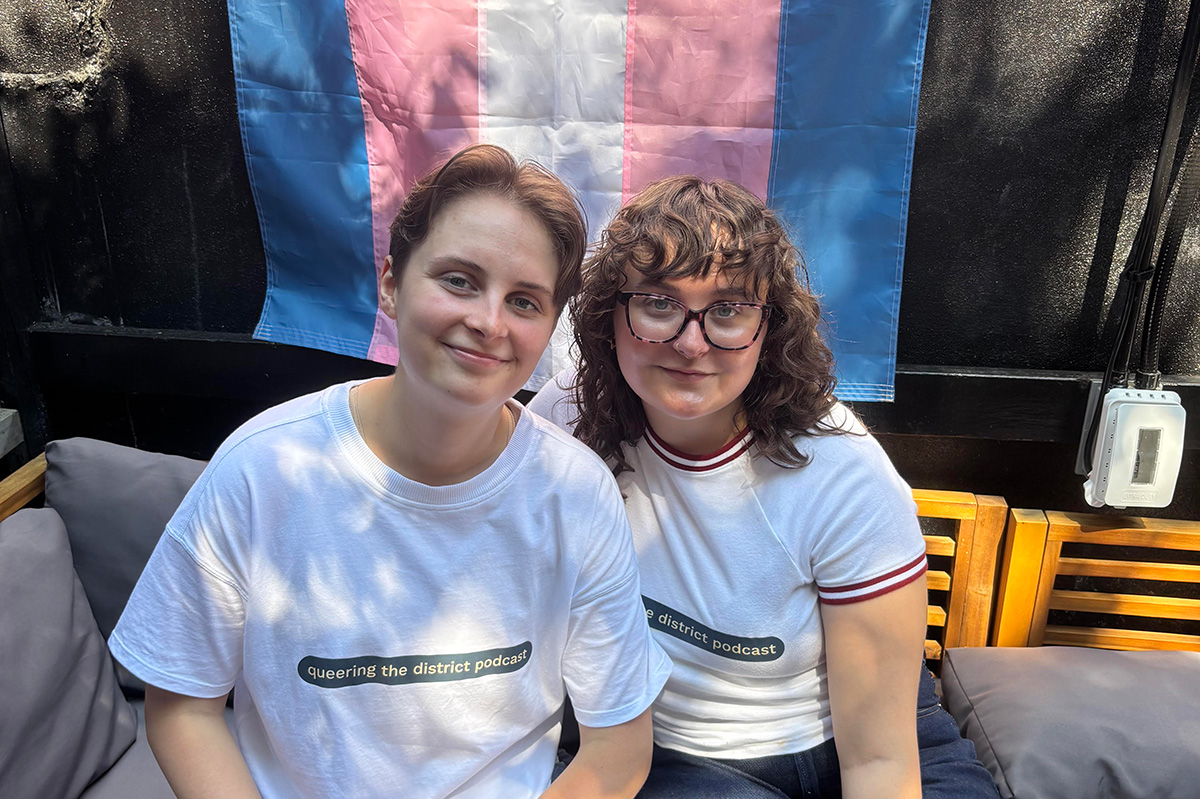
On June 25, as Pride month inched toward its end, three queer creators launched an ambitious project to honor the spaces that built D.C.’s LGBTQ community—and connect them to today’s queer life. The first episode of their podcast, Queering the District, hit streaming platforms that day, aiming to spotlight what host and co-creator Abby Stuckrath calls “third places”: bars, clubs, and gathering spots that have served as hubs for queer life across the city.
Each episode of the 10-part series delves into a different piece of D.C.’s queer past—from landmark clubs to untold personal stories—told through the voices of drag legends, activists, DJs, historians, and patrons who lived it. The show also threads together personal experiences from today’s community, bringing the listener on an auditory journey from Prohibition-era speakeasies to contemporary nights out at places like As You Are or Saints & Sinners.
Abby Stuckrath, alongside her sibling Ellie Stuckrath, and producer Mads Reagan, make up the podcast’s creative team. A recent journalism graduate of American University, Abby told the Blade that her passion for queer storytelling began during college—and that D.C. itself played a defining role in shaping her queer identity.
“I went to American University. I graduated last year and studied journalism. When I was in school, I always wanted to focus on queer stories – especially in D.C., because I’m from Denver, Colorado, I’ve never lived in a place like this before. D.C. has always just kind of been a place I call home when it comes to my queer identity.”
But breaking into the media to tell those stories wasn’t easy. Stuckrath quickly learned that editorial support—and funding—for queer-focused projects is limited. So she decided to do it her own way.
“I kind of found out that if you want to tell stories, you kind of have to do it on your own– especially when it comes to queer stories. There’s not a lot of people begging for us to talk about queer people and to pay you for it. So I was like, ‘Okay, let’s just do it on my own.’”
The idea for the podcast first took root in conversations with Ellie, Abby’s sibling and biggest supporter. Ellie had also moved to D.C. to find more space to explore and express their queer and gender identities. Together, the two began shaping a vision that would combine storytelling, sound design, and grassroots community input.
“I was like, ‘I don’t know what exactly I want to do yet, but I want it to be queer, and I want it to be about D.C., and it’s going to be called Queering the District, and we’re going to find out what that means.’ And Ellie is my biggest supporter, and my best friend. And they were like, ‘Hell yeah. Like, let’s do this.’ And so we decided to just do it together.”
The name stuck—and so did the mission. The team began researching queer D.C. history and found a city overflowing with stories that had rarely been documented, especially in mainstream archives.
“We started looking up the history of queer culture in D.C., and it kind of just clicked from there,” Stuckrath said. “I did not know anything about how rich our history is in the city until one Google search, and then I just kept learning more and more. I was kind of pissed because I studied gender studies in school in D.C. and didn’t learn shit about this.”
Season one focuses on the role of third places—non-work, non-home spaces where queer people could gather, exist fully, and build community.
“Third places have always been the epicenter of queer life… places outside of just your own personal home, because sometimes that isn’t a safe place. And of course, the work most commonly in the past and still today, isn’t a safe place for queer people to be full of themselves. So like, bars were the first place for queer people to really thrive and meet each other.”
To make the show participatory, Queering the District includes a twist: a voicemail line where anyone can call in and share a memory or question. The team calls the phone “Fifi”—a nod to the kind of retro guestbooks often used at weddings, but reimagined for queer nightlife and history.
“We wanted to find a way for people to share their stories with us anonymously… so even though we start in Prohibition, we wanted to connect it to now—like, those people who were singing jazz to each other in a white queer bar are connected to you singing karaoke on a Sunday night at your favorite gay bar. We’re all interconnected by this third place of queer bars in D.C.”
Those connections are emotional as well as historical. While building the series, one realization hit Stuckrath particularly hard: the immense loss of queer spaces in D.C., especially in neighborhoods that have since been heavily redeveloped.
“Every time I go to a Nats game, I think about, well, this just replaced five gay bars that used to be here. It used to be the home of Ziegfeld’s… Tracks, which was almost 2,000 square feet, with a volleyball court in the back, a fire pit, and iconic light show. I just didn’t know that we had that, and it made me sad for the queer elders that are in our city now who walk the streets and don’t see all those places they used to call home.”
That sense of loss—alongside the joy and resilience of queer community—is what the show aims to capture. As the podcast continues, Abby hopes it serves as both a celebration and an educational tool, especially for young LGBTQ people arriving in D.C. without realizing the queer foundations they’re walking on.
“D.C. is a unique city, and specifically young queer people who are hoping to move to the city—to know that you’ve got to know your history to be here. I hope this serves as an easier way for you to consume and learn about queer history, because queer history defines how we move in life.”
And for all the voices still left out, Abby is clear: this podcast is an open door, not a final word.
“This is a perfectly imperfect podcast. We should just be a starting point. We shouldn’t be the ending point.”
New episodes of Queering the District drop every Wednesday on all major platforms.

